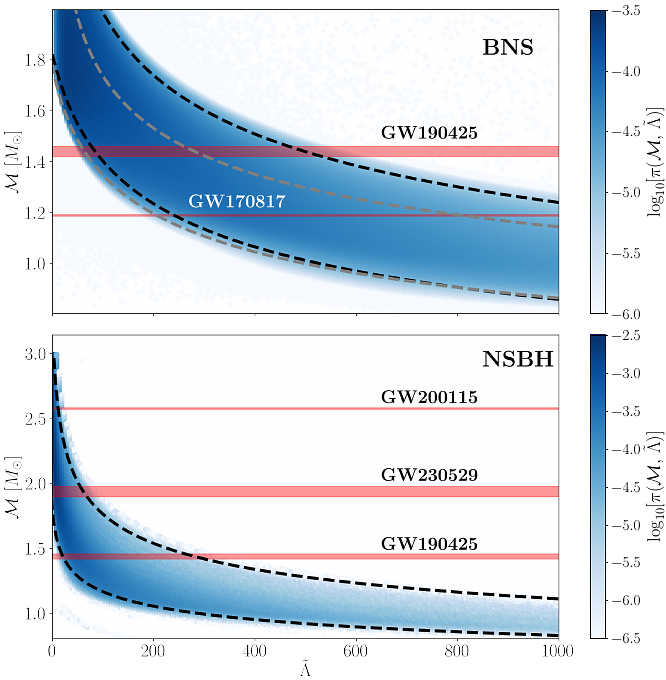Physics-Informed Priors Improve Gravitational-Wave Constraints on Neutron-Star Matter

Physics-Informed Priors Improve Gravitational-Wave Constraints on Neutron-Star Matter
Spencer J. Magnall, Christian Ecker, Luciano Rezzolla, Paul D. Lasky, Simon R. Goode
AbstractGravitational-wave astronomy shows great promise in determining nuclear physics in a regime not accessible to terrestrial experiments. We introduce physics-informed priors constrained by nuclear theory and perturbative Quantum Chromodynamics calculations, as well as astrophysical measurements of neutron-star masses and radii. When these priors are used in gravitational-wave astrophysical inference, we show a significant improvement on nuclear equation of state constraints. Applying these to the first observed gravitational-wave binary neutron-star merger GW170817, the constraints on the radius of a $1.4\,M_\odot$ neutron star improve from $R_{1.4} ={12.54^{+1.05}_{-1.54}} \, {\rm km}$ to $R_{1.4} = 12.11^{+0.91}_{-1.11} \,{\rm km}$ and those on the tidal deformability from $\tilde{\Lambda}_{1.186} < 720$ to $\tilde{\Lambda}_{1.186} = 384^{+306}_{-158}$ ($90\%$ confidence intervals) at the events measured chirp mass $\mathcal{M}=1.186\,M_\odot$. We also show these priors can be used to perform model selection between binary neutron star and neutron star-black hole mergers; in the case of GW190425, the results provide only marginal evidence with a Bayes factor $\mathcal{BF}=1.33$ in favour of the binary neutron star merger hypothesis. Given their ability to improve the astrophysical inference of binary mergers involving neutron stars, we advocate for these physics-informed priors to be used as standard in the literature and provide open-source code for reproducibility and adaptation of the method.